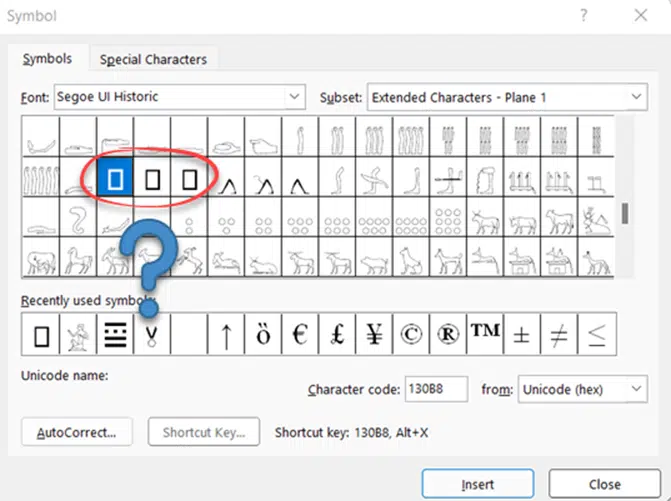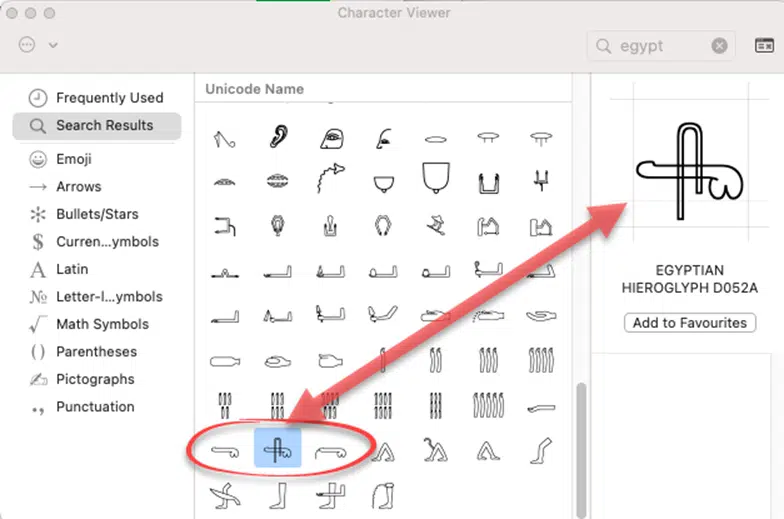There are three symbols that Microsoft won’t put in their fonts for Windows and Office. They are obscure and you’re unlikely to need them. It’s an interesting bit of trivia and example of the differing corporate cultures and judgements.
(This article includes an image that might offend some people. NSFW, as they say).
There’s a font in Windows that has Egyptian hieroglyphs, no kidding. It’s called Segoe UI Historic and has many other scripts including Coptic, Glagolitic, Gothic, Meroitic Cursive, Ogham, Old Italic, and Runic.
Starting at Unicode position 13000 are Egyptian hieroglyphs, which are just part of the enormous Unicode character set.
Typing a hieroglyph is simple once you know the Unicode hex value. In Word type 13080 then press Alt + X, in modern Word you’ll get the famous Eye of Horus. Word will switch to Segoe UI Historic because it’s a font which has that character.

See Word’s symbol substitution, the good and the bad and Try the old Alt + X trick for Word and Outlook
But try that with Unicode 130B8, 130B9 or 130BA you’ll get a black rectangle. Exactly the sort of symbol that we used to see in Word too often but has largely been eliminated.
What’s going on?
It seems Microsoft is a little squeamish, puritanical, or at least, wary of controversy. They removed three phallic hieroglyphs that are part of the Unicode standard.

Apple is OK with it
Apple macOS doesn’t have the same limitation. In the Character Viewer (Ctrl + Command + Space) and search for ‘Egypt’ shows all the available hieroglyphs including the “phallic three”.

Word’s symbol substitution, the good and the bad
Try the old Alt + X trick for Word and Outlook
Laundry care symbols typed in Word, Excel and PowerPoint
Om or Devanagari Om ॐ symbols in Word and Office